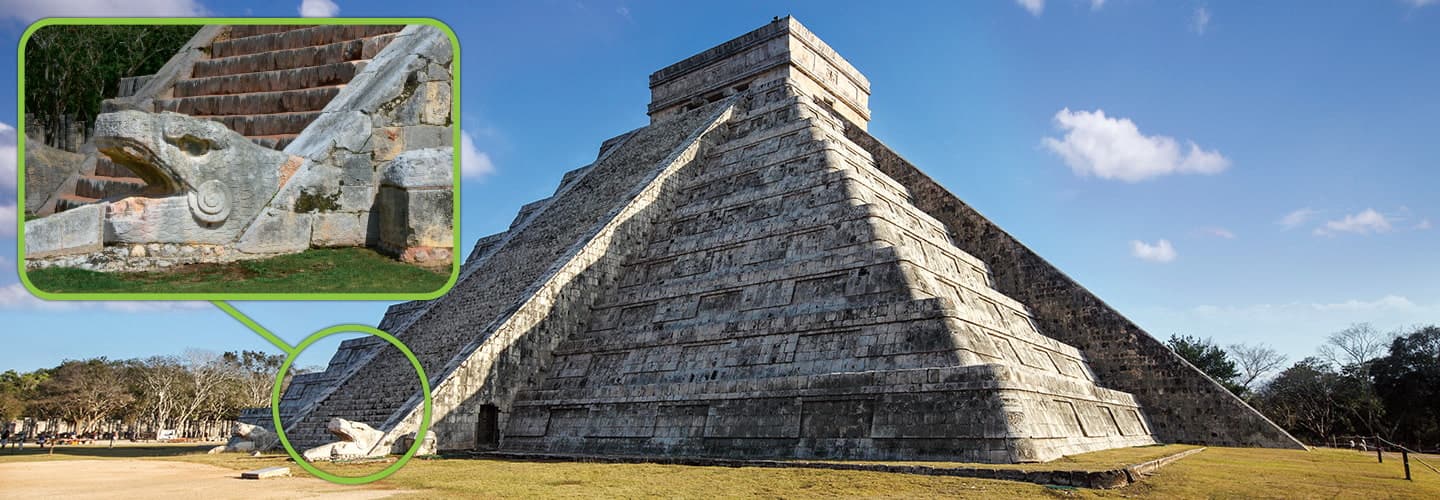Jim McMahon/Mapman®
On March 20, thousands of people will visit an ancient pyramid in Mexico. As the sun begins to set, the crowd will see a streak of light in the shape of a snake. The serpent will appear to be slithering down the pyramid’s staircase.
The pyramid was built more than 1,000 years ago in the ancient Maya city of Chichén Itzá (chee-CHEN eet-SAH). The Maya were a powerful civilization with an advanced understanding of math and astronomy. Hundreds of years before the invention of the telescope, they tracked the movements of the sun, the moon, and the planets. They used this information to create a 365-day calendar based on Earth’s orbit around the sun.

